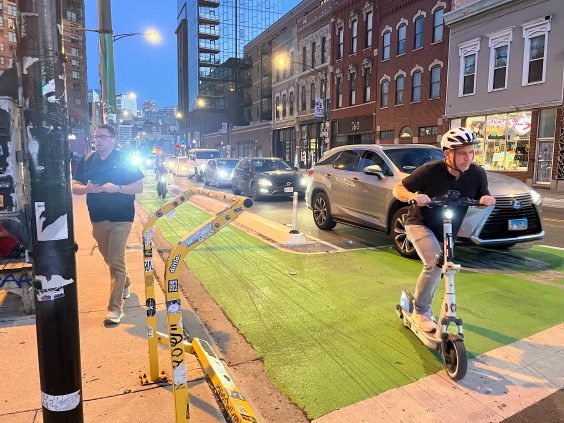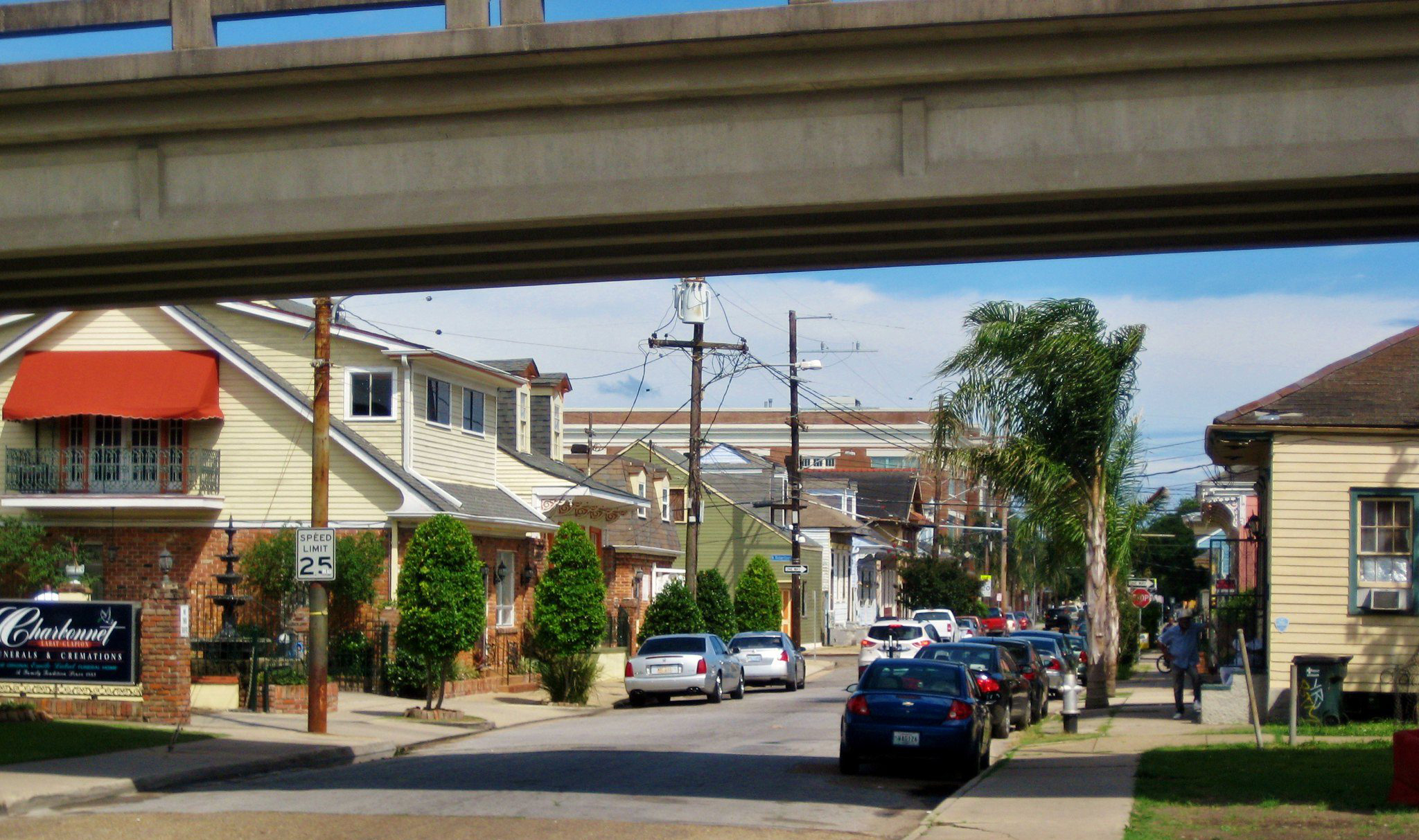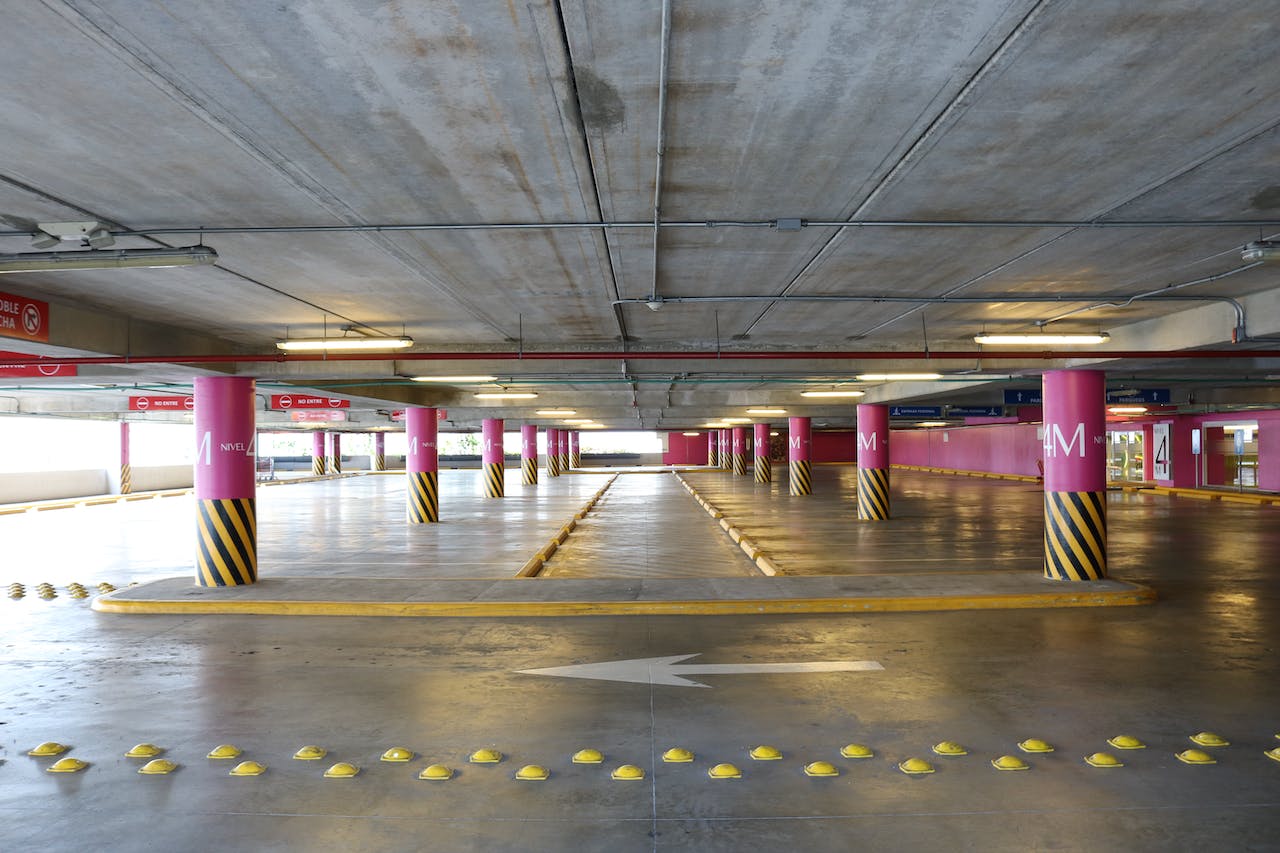After a fatal crash, the debris is quickly cleaned up and everyone moves on (usually too quickly). But Kevin Krizek and Tila Duhaime are asking us to all slow down — literally and figuratively.
This week, I talk to the pair about what they call "Emergency Streets," a concept around what the proper response should be after a fatal crash. It's clear that what we're doing right now — "Back to normal, everyone!" — isn't working. But perhaps the "Emergency Streets" protocol could better alert people to the traffic deaths happening in their communities — and get them to slow down.
First, the great thing about Streetsblog's "Talking Headways" podcast is that we give you three, count 'em three, ways to enjoy. First, you could click on that little aqua arrow in the white circle above. Or you could read the full, unedited transcript by clicking here.
Or you could enjoy an excerpt of the conversation below:
Jeff Wood: So maybe you could tell us a little bit what the idea of Emergency Streets is so people kinda get an understanding of the implementation of this idea that would address that kinetic energy as the problem.
Tila Duhaime: Well, if we could just all be better drivers and more careful all the time everywhere, the world would be a better place, right?
And maybe that’s where we’ve gone wrong in thinking that the source is just in educating people to realize the risks that they’re imposing. To try to undo or sidestep some of that thinking, we propose that after a fatal and or serious injury crash on a roadway in a municipality, every driver that’s going through that area within a half-mile radius of the fatal crash for about two weeks after the crash should be required to slow down by about 20 miles an hour, reducing significantly the kinetic energy that their car is introducing into the system.
I’m not saying we do this by enforcement or signage or "pretty please"-s. We have a good arsenal of mobile, tactical, readily deployable infrastructure that we can put out. There are construction barrels that you see at a work site, on a highway or on a major road. Barrels, bollards, barricades — these are different ways that direct drivers usually into a more constrained space than they’re used to encountering on this road. We are suggesting that we be a little bit more aggressive on the temporary engineering front so that these designs are both self-enforcing and self-obvious, and they don’t require someone standing out there for 12-hour shifts holding a "35 mile an hour please" sign.
And we think that would accomplish a few things. On Monday afternoon, a student at the high school here was involved in a two-car crash on a fairly major intersection just outside of the town limits.
Her car was wrapped around a pole and she died. I have to go that route to pick up my son from school, and it happened after I picked him up on Monday. When I took him on Tuesday morning, I had not yet heard of the crash, and I had passed by the scene and had no idea that it had happened.
By Tuesday afternoon, there was a makeshift memorial at the pole with signs and pictures and flowers, but that’s not going to stay forever. And to me this is emblematic of a major problem in our thinking about what the proper response is after a fatal crash: they get the evidence, they put down some paint or orange X marks that only mean something to the onsite investigative team, but mostly, all we do is clean up the detritus and get everything moving back the way it was when the way it was just killed someone.
There was no indication there was an extraordinary amount of speed. If both of those drivers have been going more slowly, that the crash would’ve been easier to avert and if it had occurred, it would’ve been less likely to be deadly.
The "emergency streets" concept says that normal is not correct and it alerts drivers coming through the area for two whole weeks that someone died here because mistakes were made.
Kevin Krizek: So what is the proper response? That’s the question that we’re asking communities to better answer. How do we get past the blame game, and how do we actually rectify a system in concert with ways that we know have worked in the past?






